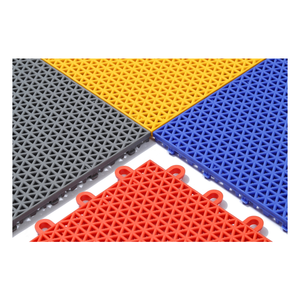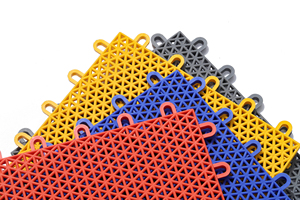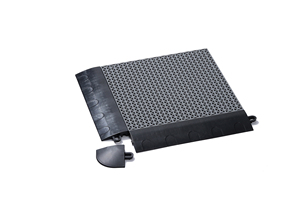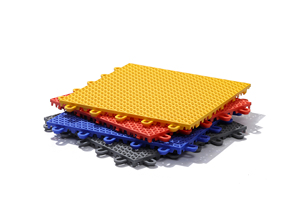
All categories
Featured selections
Trade Assurance
Buyer Central
Help Center
Get the app
Become a supplier

(469146 products available)

















































There are different types of flooring materials available, each with unique characteristics, advantages, and disadvantages. Here are some of the most common types of flooring materials:
Hardwood flooring
Hardwood flooring is a popular and widely used type of flooring. It is made from solid wood, which means that the wood used for constructing the floor is solid and not engineered. This flooring is known for its durability as it can last for many generations if well taken care of. It is also loved because of its natural beauty and warmth. Because of its many advantages, hardwood flooring is considered the best type of flooring.
Laminate flooring
Laminate flooring is a type of flooring that is designed to look like natural wood. It is composed of multiple layers of materials bonded together. These materials usually include high-density fiberboard, photographic layer, and wear layer. Laminate flooring is used to create durable and cost-effective flooring options in homes and commercial spaces.
There are four different types of laminate flooring: Residential laminate flooring: This is designed for use in homes and residential spaces. It typically has a lower wear rating than commercial-grade laminate. It is also available in a wide range of styles and finishes. Commercial laminate flooring: This type is made to withstand higher levels of foot traffic and wear and tear. It is used in offices, retail stores, and other commercial settings. It usually features a more durable wear layer and a reinforced core. Water-resistant laminate flooring: This type of laminate flooring comes with a water-resistant coating. This helps to protect it from moisture and spills, making it suitable for use in areas like kitchens and bathrooms. Wide plank laminate flooring: This type of laminate flooring features wider and longer planks. This creates a more dramatic and visually appealing look. It is available in both residential and commercial grades.
Laminated flooring:
Laminated flooring is a type of flooring that uses the term \"laminated\" to describe layers of material bonded together. It is composed of four layers. These include the wear layer, decorative layer, core layer, and backing layer. It is easy to install and more affordable than other flooring types.
Vinyl flooring
Vinyl flooring is a type of flooring that is made from synthetic materials. These materials include a backing layer, cushion layer, design layer, wear layer, and top coat. Vinyl flooring is very easy to maintain. It is water-resistant and more affordable when compared to other flooring types.
Carpet flooring
Carpet flooring is a type of flooring made from fibers that are woven together to form a soft, textured surface. Its pros include warmth and comfort, sound absorption, and it is stylish. However, it has some disadvantages like difficulty in cleaning and maintenance, and limited lifespan.
Tile flooring
Tile flooring is a type of flooring made from hard materials such as ceramic, porcelain, stone, or vinyl. It is durable, easy to clean, and comes in various styles and designs. Its disadvantages include cold and hard surface and complicated installation.
Wood flooring has different features and functions that are essential for any structure. Here are some of them:
Residential Spaces:
Laminated flooring is widely used in residential areas, such as living rooms, bedrooms, and dining areas. Its ability to imitate the appearance of wood, stone, or tiles at a lower cost makes it a popular choice for homeowners who want to achieve a certain aesthetic without spending too much money. Additionally, laminate flooring is known for its ease of installation, making it a preferred choice for DIY home renovation projects. This is especially true for homeowners who wish to update their living space with a new flooring style but want to avoid the high costs associated with professional installation.
Commercial Spaces:
Commercial spaces like offices, retail stores, and cafes often use laminate flooring due to its durability and ease of maintenance. This is particularly important for high-traffic areas where flooring materials need to withstand constant wear and tear. Moreover, laminate flooring comes in various designs, allowing businesses to choose a style that matches their brand image. For instance, a modern office may opt for laminate flooring that resembles sleek, contemporary tiles.
Rental Properties:
Rental properties, including apartments and condominiums, frequently utilize laminate flooring. This is because laminate flooring is generally more affordable than traditional hardwood flooring, making it a cost-effective option for landlords and property managers. Furthermore, laminate flooring can be replaced or updated between tenants, allowing property managers to maintain a polished appearance for their rental units.
Temporary Installations:
Laminate flooring is often used for temporary installations, such as trade show booths and event spaces. Its ease of installation and removal makes it a practical choice for setups that need to be changed quickly. Additionally, laminate flooring can create a professional and appealing aesthetic for trade show participants looking to attract visitors to their booth.
Choosing the right floor for a space involves considering many factors. Here are tips to help select the ideal floor:
Consider the purpose of the room
Different rooms serve different functions. Consider what needs to be done in a room before choosing the floor. For example, a kitchen floor should be durable and waterproof, while a bedroom floor should be warm and comfortable.
Think about the style of the space
The floor is one of the most visible parts of a room, so it needs to match the style. Consider whether the room is modern, traditional, or something else, then pick a floor that complements it.
Consider the climate
The weather where the floor will be installed also affects the choice. In very hot places, tile or vinyl that doesn't need to be kept warm in the winter should be chosen. If the climate is dry, wood that looks good in any weather should be chosen.
Think about maintenance
Some floors are easier to care for than others. If low maintenance is wanted, a floor that just needs to be wiped clean when dirty should be chosen. But if more work is okay, a wood floor that just needs to be washed once a month could also be picked.
Consider the cost
Floors come in all price ranges. Before shopping, a budget should be set to help stay on track. Remember that some floors last a long time, so they are worth spending a little more money on upfront.
Think about installation
Some floors are easier to put in than others. If a professional is wanted, they should be asked what floors they recommend. If the job is wanted to be done alone, a floor should be picked that is simple to install.
Consider the comfort
The floor is walked on, so it should be comfortable. Some floors, like carpet, are soft underfoot. Others, like tile, are hard. Think about how much comfort is wanted when walking barefoot or in slippers.
Q: What are the trends in commercial flooring?
A: Some of the trends in commercial flooring include:
Eco-friendly flooring - this involves the use of sustainable materials such as bamboo or cork and the use of recyclable materials in manufacturing.
Digital print flooring - this allows the use of customized digital designs on the floor, enabling personalization and branding.
Textured surfaces - these include 3D designs and raised patterns, adding depth and interest to the floor.
Smart flooring - this comes with technology-integrated features such as sensor-enabled lighting and temperature control.
Q: How long do commercial floors last?
A: The lifespan of a commercial floor varies depending on the material used. Vinyl floors can last between 10 to 40 years, LVT 25 to 50 years, carpet 5 to 40 years, rubber 25 to 40 years, and concrete up to 100 years. However, these figures are not absolute as they depend on factors such as maintenance, foot traffic, and the quality of the flooring material. Proper maintenance can help extend the lifespan of the floor.
Q: Is it easy to install commercial flooring?
A: The installation process of commercial flooring varies depending on the type. For example, vinyl tiles are easy to install and require no adhesive, while sheet vinyl and other flooring types require skilled personnel for installation. Despite the differences, all types of commercial flooring require proper installation for effective performance and longevity. Poor installation can lead to issues like bubbling, uneven surfaces, and premature wear.
Q: Can commercial flooring be replaced?
A: Yes, commercial flooring can be replaced. However, the replacement process will depend on the existing floor and the new one. Factors to consider when replacing a floor include the subfloor condition, the ease of installation, and the type of adhesive used. It is advisable to consult a professional to determine the best approach to replace a commercial floor.